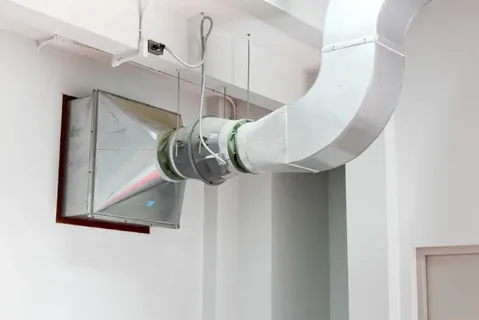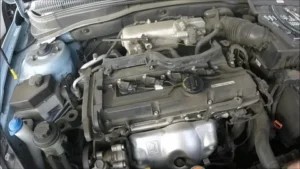A proper air ventilation system for home is essential for maintaining a healthy and comfortable living environment in any home. It plays a pivotal role in controlling indoor air quality, regulating humidity levels, and enhancing energy efficiency. As we spend more time indoors, understanding how these systems work and what options are available can significantly impact our health and well-being. This guide provides a comprehensive overview of home ventilation systems, helping you make informed decisions for your living space.
Understanding the Importance of Home Ventilation Systems
A well-functioning home ventilation system ensures a healthy living environment by expelling stale air and introducing fresh air. This continuous airflow helps mitigate pollutants, allergens, and excess moisture that can lead to mould growth and respiratory issues. Proper ventilation significantly contributes to maintaining a comfortable indoor climate by regulating temperature and humidity levels. It also helps reduce unpleasant odours from cooking, pets, and other sources.
Additionally, a good ventilation system safeguards the structural integrity of your home by preventing the accumulation of moisture, which can damage building materials over time. Maintaining high indoor air quality reduces health risks such as asthma and allergies, creating a safer environment for your family.
The Different Types of Home Ventilation Systems
Home ventilation systems come in three main types: natural, mechanical, and hybrid.
Natural Ventilation
This type leverages natural forces such as wind and temperature variations to circulate air through windows, doors, and vents. It is a cost-effective option in moderate climates and less tightly sealed homes. However, its effectiveness can be limited during extreme weather or in homes with high insulation.
Mechanical Ventilation
Utilizing fans and ductwork, mechanical ventilation actively manages the intake of fresh air and the expulsion of stale air. Various mechanical systems exist, including exhaust fans that remove indoor air, supply fans that bring in fresh air, and balanced systems that manage both simultaneously. Mechanical systems provide consistent airflow regardless of outdoor conditions, making them highly reliable for maintaining indoor air quality.
Hybrid Ventilation
Combining elements of both natural and mechanical methods, hybrid ventilation offers the best of both worlds. It allows for flexible operation based on seasonal changes and the household’s specific needs. For instance, a hybrid system might rely on natural ventilation during mild weather but switch to mechanical methods during extreme temperatures, optimizing energy efficiency and air quality.
Selecting the appropriate system involves considering your home’s design, the local climate, and air quality needs. Whether you aim for energy efficiency, cost-effectiveness, or optimal indoor air quality, understanding the different types of home ventilation systems will help you choose the best solution for your living space.
Key Components of an Effective Home Ventilation System
An effective home ventilation system consists of several key components that work together to maintain optimal indoor air quality and comfort:
Fans
Fans are indispensable for driving air movement in mechanical systems. They help draw in fresh outdoor air while expelling stale indoor air. The type and capacity of fans used can significantly impact the overall performance and efficiency of the system.
Ductwork
Well-designed and properly insulated ductwork is essential for evenly distributing air throughout the home. Any leaks or poor insulation in the ducts can lead to energy loss, decreased efficiency, and uneven temperature distribution.
Vents and Grilles
Strategically placed vents and grilles are crucial for controlling and directing airflow within the home. These components ensure air reaches all necessary areas, contributing to balanced ventilation and overall comfort.
Filters
High-quality air filters are necessary for trapping dust, allergens, and other pollutants. Regularly replacing or cleaning filters is essential to maintain the system’s efficiency and ensure a healthy indoor environment.
Heat Recovery Ventilators (HRVs) and Energy Recovery Ventilators (ERVs)
These devices are used in advanced systems to enhance energy efficiency by recovering heat or energy from the exhausted air and conditioning incoming fresh air. HRVs are ideal for colder climates, while ERVs are better suited for regions with varying humidity levels.
Understanding these components and their roles can help you evaluate the effectiveness of your current system or guide you in selecting a new one that meets your specific needs.
Factors to Consider When Choosing a Home Ventilation System
Several critical factors should guide your decision when choosing a home ventilation system. First, consider your region’s climate. For instance, mechanical systems with heat recovery ventilators (HRVs) are more effective in colder climates, while energy recovery ventilators (ERVs) are better suited for areas with varying humidity levels.
Next, assess the size and design of your home. Larger homes or those with multiple stories may require more complex systems with extensive ductwork and multiple fans to ensure adequate airflow. On the other hand, smaller or open-concept homes might be well-served by simpler systems.
Energy efficiency is another crucial consideration. Look for systems with high-efficiency ratings and the ENERGY STAR label. These systems reduce your utility bills and contribute to environmental sustainability.
Your specific air quality needs should also be a deciding factor. If anyone in your household suffers from allergies or respiratory issues, prioritize systems with advanced filtration capabilities to capture dust, pollen, and other allergens.
Noise levels are often overlooked but essential for comfort. Ensure your selected system operates quietly, especially if the unit is near living spaces or bedrooms.
Budget constraints also play a significant role. While high-end systems offer superior performance and energy efficiency, they come with a higher initial cost. Balancing upfront expenses with long-term benefits such as lower energy bills and improved air quality is essential.
Lastly, consider the ease of maintenance. Systems that require frequent filter changes or complex upkeep may not be ideal if you prefer a low-maintenance solution. Opt for systems with accessible components and straightforward maintenance routines to ensure long-term reliability and performance.
By weighing these factors, you can select a home ventilation system that best suits your needs and enhances your living environment.
Installation and Maintenance of Home Ventilation Systems
Proper installation is crucial for the performance and longevity of your home ventilation system. Hiring a qualified professional ensures that the system is installed according to manufacturer specifications and industry standards, minimizing the risk of energy loss and ensuring optimal air quality.
Once your system is in place, regular maintenance is essential to keep it functioning efficiently. Begin by routinely cleaning or replacing air filters; this simple step can dramatically improve your system’s air quality and efficiency. Filters should be checked and replaced every 1-3 months, depending on the usage and specific system requirements.
Additionally, periodic inspections of fans and ductwork are necessary. Look for any blockages, leaks, or signs of damage that could impede airflow and reduce the system’s effectiveness. Addressing these issues promptly can prevent larger problems and costly repairs.
Humidity levels should also be monitored regularly. Maintaining appropriate humidity helps prevent mould growth and keeps indoor air comfortable. Many modern systems have built-in sensors to help manage this aspect automatically, but it’s still wise to monitor these levels manually.
Lubricating moving parts, such as fan motors, and ensuring that all electrical connections are secure can also extend the life of your system. Don’t overlook the importance of regular professional check-ups. An annual service by a qualified technician can catch potential issues early and keep your system running smoothly.
Adhering to a diligent maintenance routine enhances the system’s longevity, performance, and energy efficiency, ensuring a healthier living environment for your home.
Energy Efficiency and Cost Implications
Choosing an energy-efficient home ventilation system can lead to substantial savings on your utility bills. These systems are designed to consume less power by optimizing the airflow and minimizing energy wastage. One primary way to ensure energy efficiency is by selecting a system with the ENERGY STAR label, which certifies that the unit meets stringent energy performance standards.
Although energy-efficient systems may have a higher initial purchase price, they offer long-term savings through reduced energy consumption. Moreover, many utility companies provide rebates or incentives for installing energy-efficient ventilation systems, further offsetting the initial costs. Beyond the financial benefits, using less energy also means a lower environmental footprint, contributing to a more sustainable lifestyle.
Advanced features like Heat Recovery Ventilators (HRVs) and Energy Recovery Ventilators (ERVs) significantly enhance energy efficiency. These devices recover heat or energy from exhausted air and use it to condition incoming fresh air, reducing the need for additional heating or cooling.
Additionally, modern systems often come equipped with smart controls and sensors that automatically adjust the system based on real-time air quality, temperature, and humidity levels. These smart features ensure the system operates at peak efficiency, providing optimal indoor air quality with minimal energy use.
Investing in an energy-efficient home ventilation system cuts costs and promotes a healthier and more sustainable living environment. By focusing on energy efficiency, you can enjoy a comfortable home while contributing to environmental conservation.
Future Trends in Home Ventilation Systems
Home ventilation systems are continuously evolving, driven by the need for greater efficiency, smarter technology, and sustainability. One prominent trend is the integration of smart technology, which uses advanced sensors to monitor indoor air quality, temperature, and humidity in real time. These systems can automatically adjust airflow and other parameters to maintain optimal conditions, offering a hands-off approach to home comfort and efficiency.
Eco-friendly materials and renewable energy sources are becoming increasingly important in designing and manufacturing these systems. Companies focus on reducing the production process’s carbon footprint and the systems. This includes the use of recycled materials, low-impact manufacturing techniques, and components that are easier to recycle at the end of their lifecycle.
Another significant trend is the adoption of zoned ventilation systems. These allow customized airflow management in different home areas, improving comfort and reducing energy use. For example, bedrooms and living areas can have different ventilation settings based on usage patterns, enhancing overall energy efficiency.
Integration with other smart home systems is also on the rise. Modern ventilation systems can now be linked with heating, cooling, and even security systems, providing a comprehensive approach to home automation. This integration enables more precise control over indoor environments and can result in significant energy savings.
Finally, there’s a growing interest in portable and modular ventilation solutions. These systems offer flexibility, allowing homeowners to easily relocate or upgrade their ventilation setup without extensive renovations. This adaptability is particularly useful in rental properties or homes where permanent installations are not feasible.
Conclusion
A robust air ventilation system for home is essential for maintaining health and comfort within your living space. These systems significantly improve indoor air quality and overall well-being by ensuring a steady flow of fresh air and expelling pollutants. Understanding the different types of ventilation systems—natural, mechanical, and hybrid—can help you choose the best option tailored to your specific needs and environmental conditions. Looking ahead, advancements in smart technology, eco-friendly materials, zoned ventilation, and integration with other smart home systems promise exciting developments in home ventilation.
FAQs
Q: What is the best air ventilation system for home for colder climates?
A: Mechanical ventilation systems with Heat Recovery Ventilators (HRVs) are ideal for colder climates. These systems efficiently recover heat from exhausted air and use it to warm incoming fresh air, ensuring energy-efficient temperature control.
Q: How often should I replace the filters in my ventilation system?
A: Filters should generally be checked and replaced every 1-3 months, depending on the system’s usage and the specific manufacturer’s guidelines. Regular replacement ensures optimal air quality and system efficiency.
Q: Can I install a home ventilation system myself?
A: While some components, like window fans, maybe DIY-friendly, professional installation is highly recommended for comprehensive systems. This ensures the system is installed according to industry standards, maximizing performance and longevity.
| Related Business Listings |
| Contact Directory |
| Local Business Profiles |




